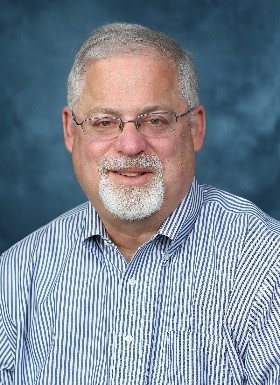Helping Families Prepare for Disasters and Emergencies

Steven E. Krug, MD, FAAP
September 10, 2021
September is National Preparedness Month, and this year also marks the 20th anniversary of 9/11, an event that brought terrorism home. I have very vivid memories of where I was when I heard the horrible news of the planes crashing into the Twin Towers in New York. My alma mater high school in lower Manhattan was less than a mile away from Ground Zero. I could not bear to watch the video images.
I also well remember the deadly trail of Hurricane Katrina in 2005 and the damage it caused in New Orleans and elsewhere – damage that was disproportionately felt by those who were Black and Brown and those living in poverty. Many families and children were unable to flee the path of the storm and were caught off-guard by the high waters.
Planning for the worst is crucial as severe storms, flooding, wildfires, and hurricanes continue to be more common and more destructive. Recent experiences, data, and expert opinion indicate that the severity and frequency of adverse weather events are steadily rising.
“It can be easy to think a plan for other disasters is not crucial amid the pandemic, but it is vital.”
The COVID-19 pandemic continues to draw most of our attention, and rightly so. We should be prepared for cases to continue to climb and for new variants to arise. It can be easy to think a plan for other disasters is not crucial amid the pandemic, but it is vital. If you and your children were separated during a wildfire or flood, would they know where to go for help? Do you have a bag filled with emergency supplies if you were forced to flee your home because of a terror attack? Do you talk to your patients’ parents about having a plan? What about those with children who have special needs?
In response to public health emergencies, the American Academy of Pediatrics has evolved in a very gratifying way over the past two decades, forming a Disaster Preparedness Advisory Council in 2007, partially in response to Katrina. When we first met, the Federal Pandemic and All-Hazards Preparedness Act had just been passed. Sadly, this national blueprint offered little to no mention of children or their unique needs.
Over the past 14 years, we have succeeded in bringing the needs of children to the table. Pediatricians now sit on key Federal Advisory Committees and the AAP has become a desired and reliable partner for pediatric-centric projects funded by the CDC, HRSA, ASPR, and others. The AAP now has a Council on Children and Disasters with membership, policy, advocacy, and educational opportunities.
Pediatricians can influence current events in a number of ways, including in their practice with patients and families. Perhaps not a tactic for all, but many pediatricians have adopted social and traditional media as means to inform and influence others.
The pandemic also offers a crucial opportunity to partner with other organizations and support the diligent efforts of our public health colleagues.
It has been my experience that most elected or appointed officials, and the public in general, care about our children. It has also been observed that pediatricians, and the AAP, are viewed as trusted sources of information. The intersection between these two observations represents an enormous opportunity.
As pediatricians, we also can talk to families about having a disaster-preparedness plan. The plan should include teaching children the basics about what to do in a fire or flood and selecting a person (preferably not a local person who might be affected by the same disaster) that everyone can contact if the family becomes separated. There also should be a meeting place outside the house where family members can go if they are forced to flee. Recommend that parents put together an emergency bag or backpack containing a first aid kit, batteries, flashlight, water, energy bars, cash, rain ponchos, medications, emergency information, and other essentials.
Historically, it’s been difficult to inspire engagement in readiness activities in communities where disasters are not viewed as a concern or likely occurrence. But with a sizeable portion of the West on fire, and with large areas of the Gulf Coast leveled by a hurricane and with damage and deaths extending along the East Coast, I believe the punishing impact of disasters is on the minds of most.
There is no better time than the present to make preparedness part of everything we do, including anticipatory guidance for patient families, informing and assisting schools and other congregate settings on how to prepare, educating local emergency planners on children’s unique needs, and assuring that every pediatrician has a personal and a family disaster preparedness plan. Lastly, all practice settings should be prepared, with a plan developed and exercised to meet children’s needs.
*The views expressed in this article are those of the author, and not necessarily those of the American Academy of Pediatrics.
About the Author
Steven E. Krug, MD, FAAP
Steven E. Krug, MD, FAAP, is a Professor of Pediatrics at the Northwestern University Feinberg School of Medicine in Chicago and the chair of the AAP Council on Children and Disasters.